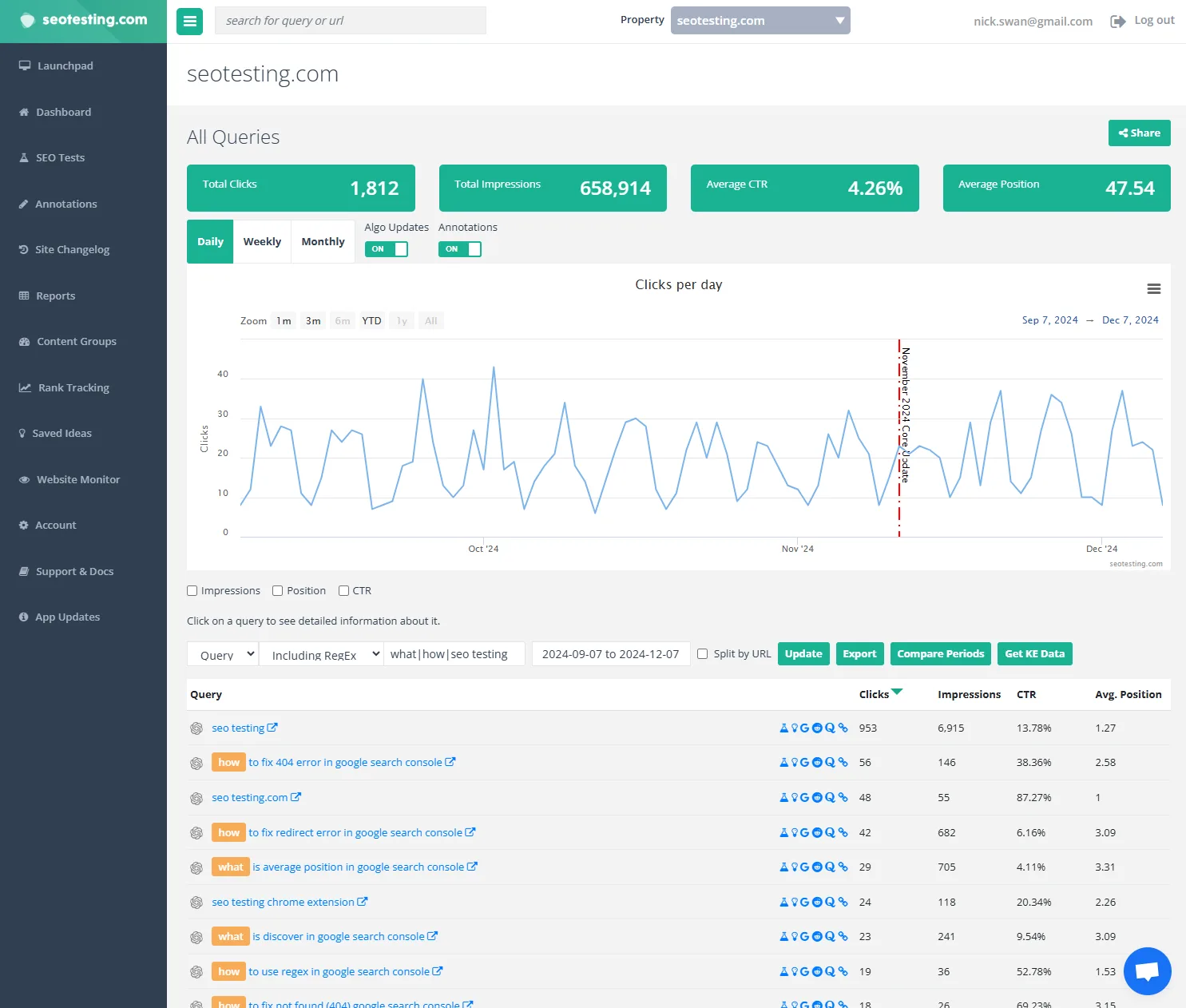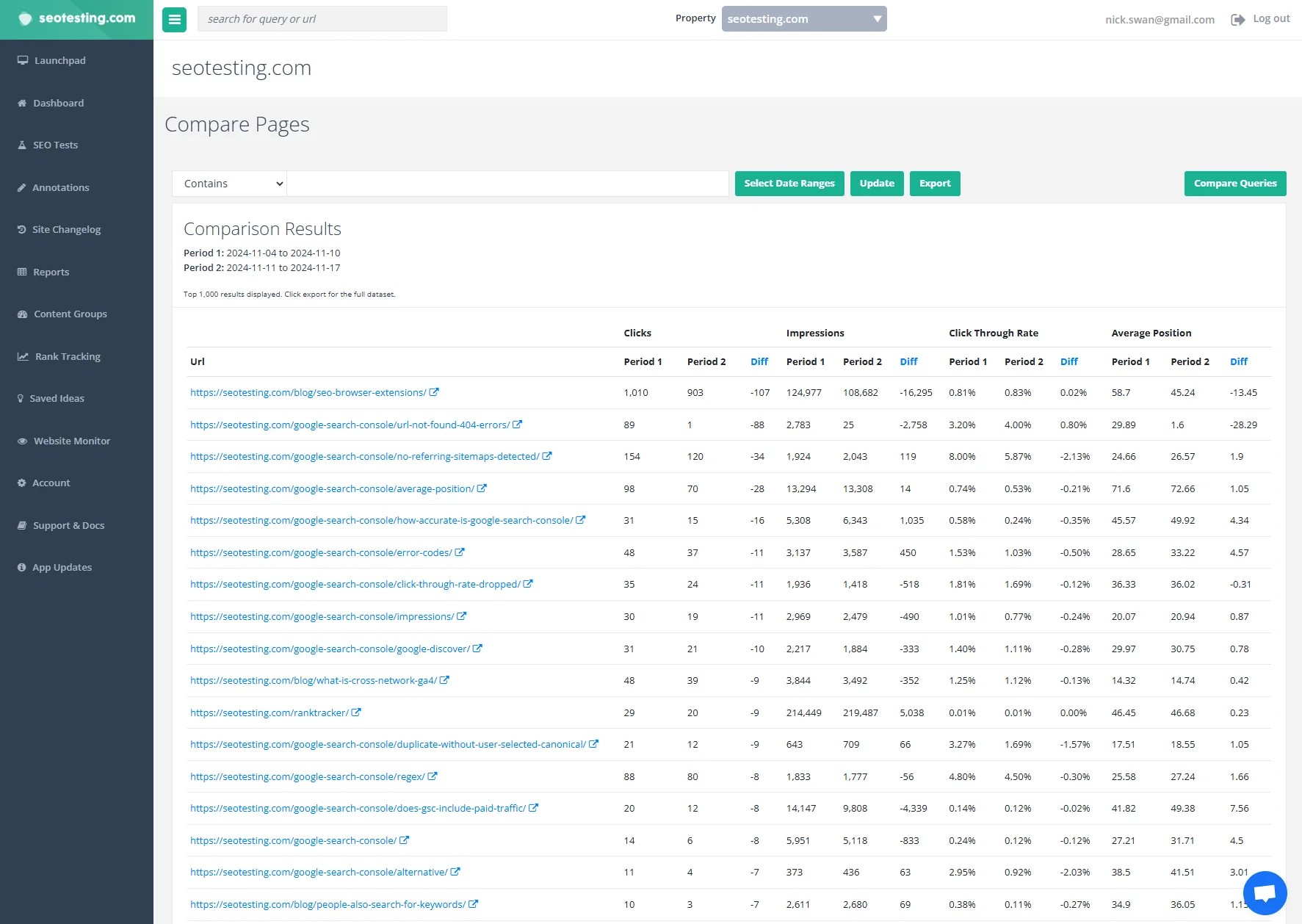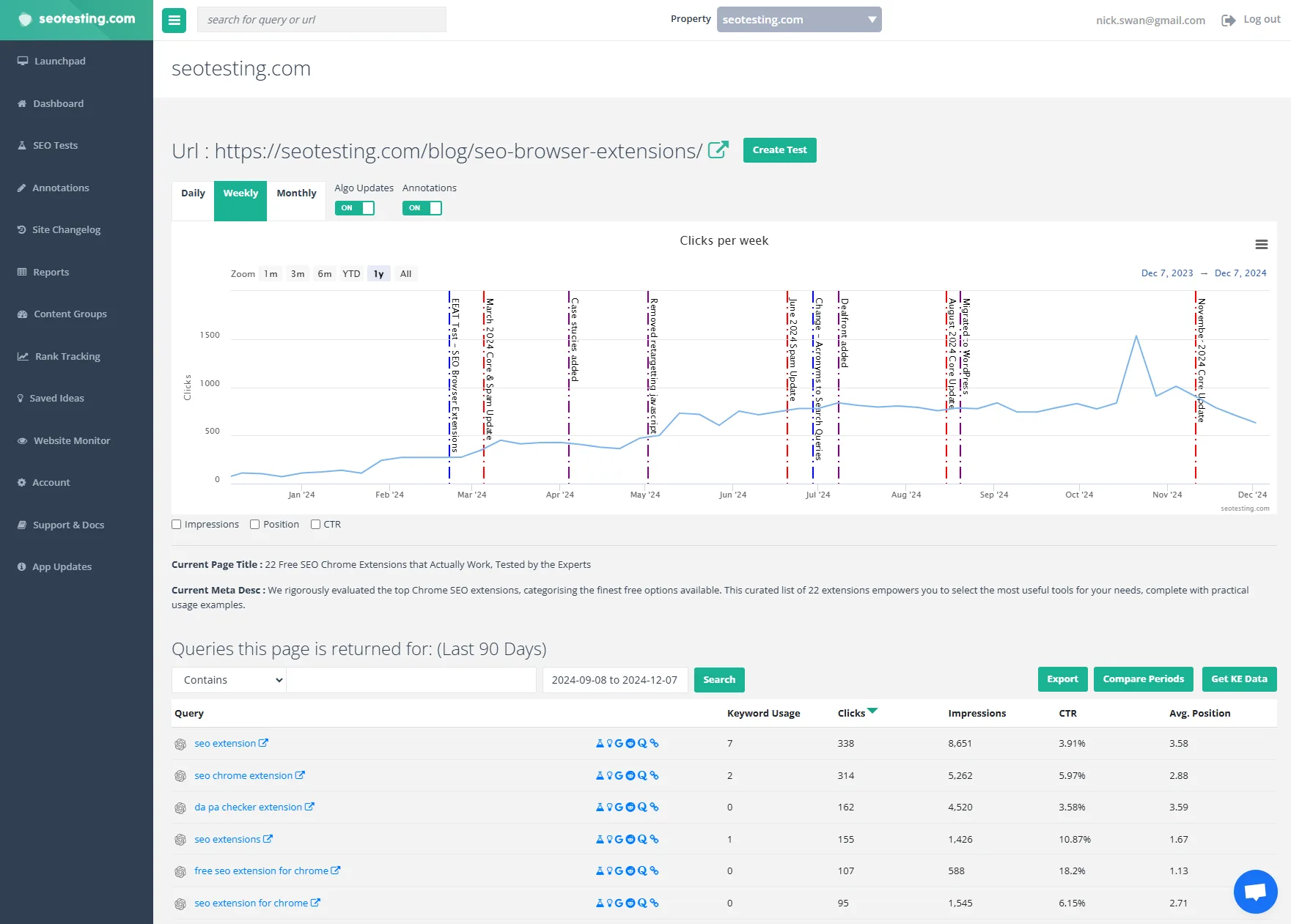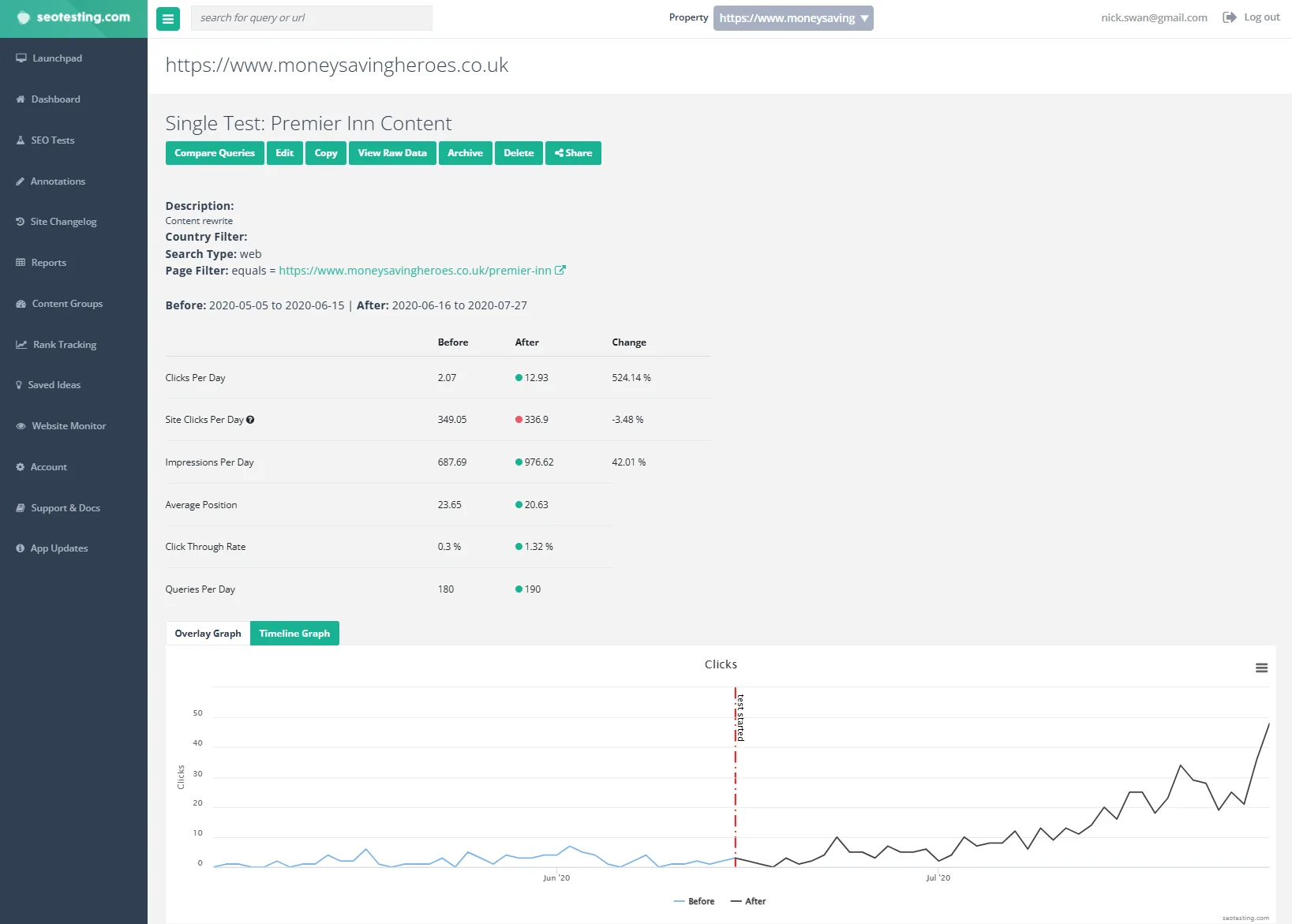Access and analyze your Google Search Console data without limits
- View all your Search Console data without 1,000 row limits
- Compare performance over time with the Compare Pages and Compare Queries reports.
- Drill into detailed insights for any page or query with custom actions and visualized trends.












